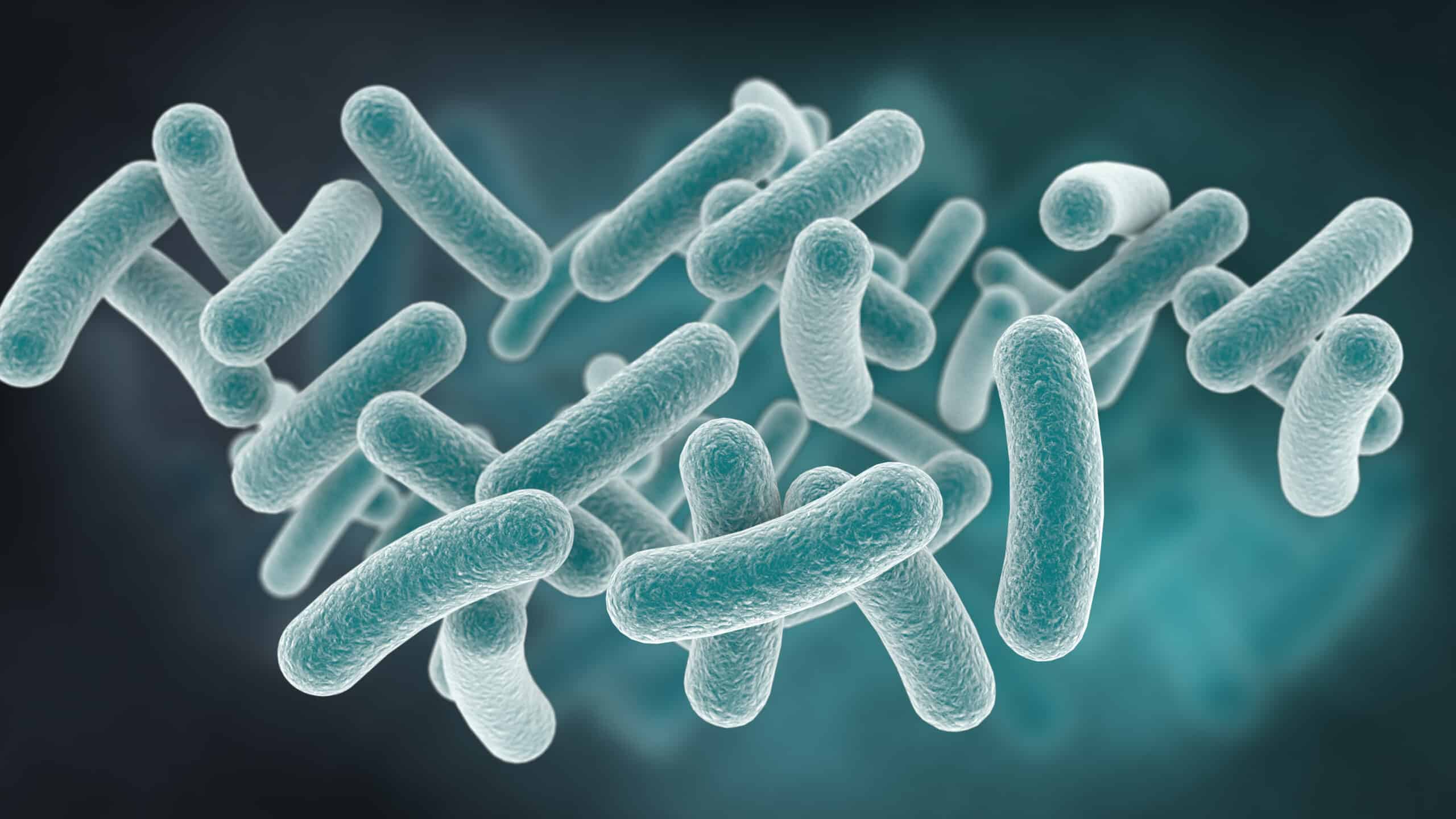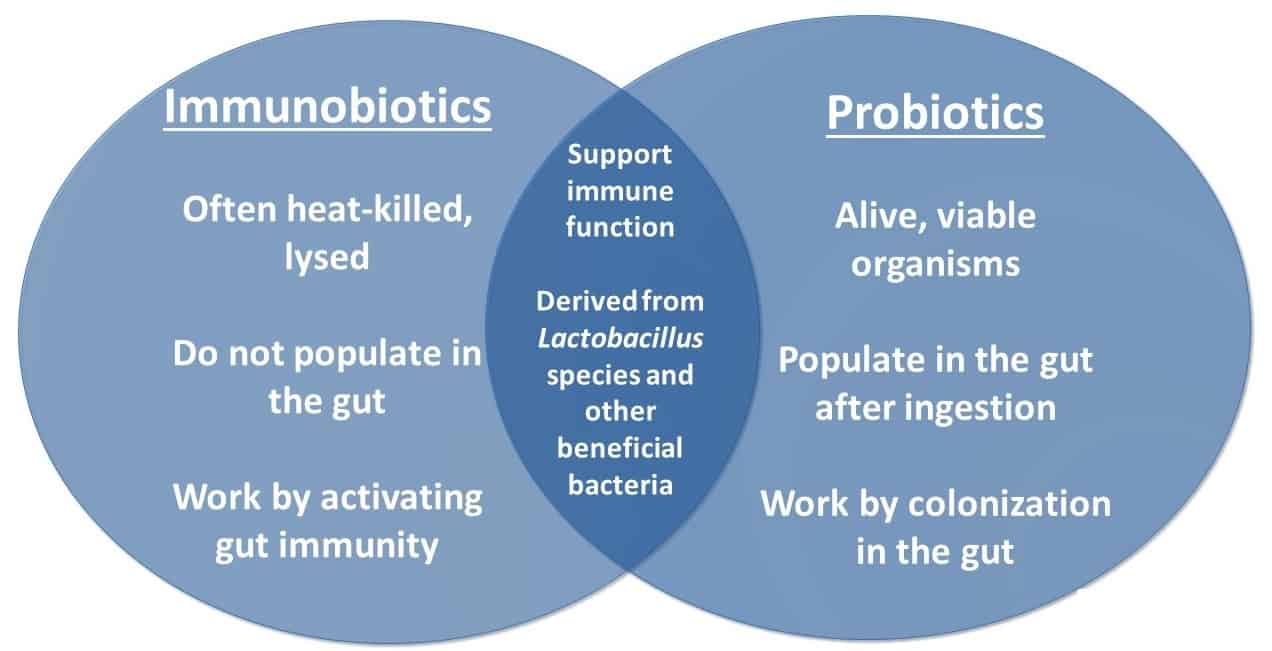Share this post
The case for killed probiotics
From yogurt to miso, kombucha to kefir, the friendly bacteria found in fermented foods play an important role in our health: there is no shortage of studies demonstrating the efficacy of probiotics (or “good bacteria”) in helping a myriad of conditions.[1]
Most probiotic foods and supplements work by delivering good bacteria into the human digestive tract, where they propagate and yield health-boosting benefits. Probiotics are technically defined as live bacteria that convey health benefits. Higher-end stores therefore keep probiotic supplements and fermented foods in the refrigerator section, as cooler temperatures preserve the viability of the tiny salubrious microbes.
After all, nobody wants to take a pill full of dead bacteria, right? Well…
As it turns out, there is an entire sub-class of bacteria very similar to probiotics that work by way of, well, being dead. These heat-killed bacteria, more specifically known as immunobiotics, have their own unique way of enhancing immune system function. Without populating the gut, immunobiotics support health by activating gut immunity and thus are able to boost the infection-fighting branch of the immune system.
Without populating the gut, immunobiotics support health by activating gut immunity and thus are able to boost the infection-fighting branch of the immune system.
How heat-killed probiotics work
Although they do not populate in the gut, the “dead” bacteria fragments found in immunobiotics nevertheless trigger an immune system response. The mere presence of bacterial cell fragments – regardless of whether they’re dead or alive – is able to shift the immune system into higher gear. Yet the process of heat-killing a probiotic also confers additional benefit: heat denatures the cell membrane, thus protecting the cell wall of the immunobiotic from the digestive enzymes of the human gut. By better surviving the digestive tract, heat-killed immunobiotics exert different (and perhaps greater) immune-enhancing properties than live probiotics.[2]
By better surviving the digestive tract, heat-killed immunobiotics exert different (and perhaps greater) immune-enhancing properties than live probiotics.
Immunobiotics further work by modulating T-cell response.[3],[4] A T-cell (or T-lymphocyte) is a type of white blood cell made by the body that serves an important function in immunity. Depending on the types of signals received, a T-cell can turn into different cell types to mount the type of immune response called for. Two noteworthy T-cell classes include: (1) Th1 cells, which attack intracellular microbes such as bacteria and viruses, and (2) Th2 cells, which fight worms, parasites, and other extracellular pathogens. A Th2 response is also seen in allergic responses, and individuals with conditions like eczema, asthma, and allergic rhinitis are understood to be immunologically Th2 dominant – meaning their immune systems are a little too good at creating Th2 cells and weak in the Th1 department.[5] Supporting Th1 function can thus not only help the immune system more effectively clear bacterial and viral infections, but may also potentially combat allergies. Probiotics are able to enhance Th1 function (some more than others), but immunobiotics in particular are powerhouses at boosting Th1 because of their ability to survive degradation by the digestive enzymes in the human gut.[2]
An additional benefit of immunobiotics is that unlike their “classic” probiotic peers, they do not require refrigeration, are stable at room temperature, and have a longer shelf life than regular probiotics. Furthermore, because there is no risk of their colonization within the human digestive tract, immunobiotics may offer a safer alternative to live probiotics for immune-compromised patients, such as those undergoing chemotherapy.
Unlike their “classic” probiotic peers, immunobiotics do not require refrigeration, are stable at room temperature, and have a longer shelf life than regular probiotics.
Three strains of immunobiotics in particular have been recently studied for their effects on immune function:
Heat-killed Lactobacillus plantarum L-137
Lactobacillus plantarum is a type of lactic acid bacteria found in a variety of fermented foods like sauerkraut, pickles, and yogurt, but it’s also a popular ingredient in energy drinks in Japan. The heat-killed version of the specific strain L-137 of this bacteria (HK L-137), has been shown to enhance immune activity, exerting anti-allergic and anti-viral effects, primarily by means of increasing Th1 production.[6],[7]
Due to the immunosuppressive effects of both physical and emotional stress, we’re more likely to fall ill during hard times in life. Interestingly, in a recent study 50 mg daily of HK L-137 for 12 weeks was shown to decrease the incidence, duration, and symptoms of upper respiratory tract infections (URTI) in adults with psychological and emotional stress, and to improve T-cell growth.[8] It likely does this by increasing the immune signaling molecules (cytokines) interleukin 12 (IL-12) and interferon beta (IFNβ).[9],[10]
In another study on HK L-137, 50 mg daily for 12 weeks in adults above the age of 40 was shown to enhance T cell growth, Th1/Th2 ratio, and health-related quality of life measures.[11]
HK L-137 also has demonstrated effects in periodontal disease (diseases affecting the gums and other tissue surrounding the teeth), in particular with respect to reducing the size of periodontal pockets.[12] In rats it has even been shown to decrease cardiovascular inflammation, a risk factor for heart attack and stroke.[13]
Heat-killed Lactobacillus acidophilus L-92
Lactobacillus acidophilus L-92 has been commonly used in fermented milk and other products in Japan since the 1990’s, and has been studied in particular for its role in alleviating allergies.[14], [15],[16],[17],[18]
Lactobacillus rhamnosus lysate
Noting the folklore regarding the immune-stimulating properties of cultured milk products, Russian microbiologists sought to increase the immune activity of lactobacilli. They found that breaking apart the cell walls of the lactobacilli allowed the immune-active proteins usually trapped behind the walls to better support the human immune system response.[19] These lactobacilli cell-wall fragments were then used in clinical trials in 1992 at the State Cancer Hospital in St. Petersburg, Russia, and have been used as immune stimulators in Europe since then.
Lactobacillus rhamnosus lysate (LRL), with its broken apart cell wall, has also yielded compelling results. Children ranging in age from 8 to 64 months with treatment-resistant eczema were supplemented with LRL. Those less than three years of age were given 300 mg twice daily, while those older received 500 mg twice daily. After seven days, 9 of the 14 children in the study showed marked improvements in their eczema symptoms, with reduced daytime irritation and nighttime sleep disturbance. All of the eczema symptoms assessed – redness, scaling, thickening, and itching – gradually improved in the subjects in the one month, three month, and six month follow up assessments.[20] Cell studies also have shown that LRL promotes the proliferation of skin cells and behavior that mimics wound healing.[21]
Killed microbes for the win
Immunobiotics offer a truly unique approach to supporting the immune system, enhancing the response to infectious illnesses and dampening allergic reactions such as those seen with eczema. Turns out not all probiotics need to be refrigerated after all – in fact, some of these “dead” ones have plenty to offer.
Click here to see References
[1] Boirivant M, Strober W. The mechanism of action of probiotics. Curr Opin Gastroenterol. 2007;23(6):679-92. [2] Fujiki T, et al. Enhanced immuno-modulatory activity and stability in simulated digestive juices of Lactobacillus plantarum L-137 by heat treatment. Biosci Biotechnol Biochem. 2012;76:918-922. [3] Torii A, et al. Lactobacillus acidophilus strain L-92 regulates the production of Th1 cytokine as well as Th2 cytokines. Allergol Int. 2007;56:293-301. [4] Kanzato H, et al. Lactobacillus acidophilus strain L-92 induces apoptosis of antigen-stimulated T cells by modulation dendritic cell function. Immunobiology 2008;213:399-408. [5] Braga M, et al. T regulatory cells in allergy. Int J Immunopathol Pharmacol. 2011 Jan-Mar;24(1 Suppl):55S-64S. [6] Murosaki S, et al. Antitumor effect of heat-killed Lactobacillus plantarum L-137 through restoration of impaired interleukin-12 production in tumor-bearing mice. Cancer Immunol Immunother. 2000;49:157-164. [7] Hirose Y, et al. Daily intake of heat-killed Lactobacillus plantarum L-137 augments acquired immunity in healthy adults. J Nutr 2006;136:3069-3073. [8] Yoshitaka H, et al. Oral intake of heat-killed Lactobacillus plantarum L-137 decreases the incidence of upper respiratory tract infection in healthy subjects with high levels of psychological stress. Jour Nut Sci. 2013;39(2):1-8. [9] Murosaki S, et al. Heat-killed Lactobacillus plantarum L-137 suppresses naturally fed antigen- specific IgE production by stimulation of IL-12 production in mice. J Allergy Clin Immunol. 1998;102;57-64. [10] Hirose Y, et al. Lipoteichoic acids on Lactobacillus plantarum cell surfaces correlate with induction of interleukin-12p40 production. Microbiol Immunol. 2010;54:143-151. [11] Yoshitaka H, et al. Daily intake of heat-killed lactobacillus plantarum L-137 augments acquired immunity in healthy adults. J Nutr. 2006 Dec;136(12):3069-73. [12] Iwasaki K, et al. Daily intake of heat-killed Lactobacillus plantarum L-137 decreases the probing depth in patients undergoing supportive periodontal therapy. Oral Health Prev Dent. 2016;14(3):207-14. [13] Uchinaka A, et al. Anti-inflammatory effects of heat-killed Lactobacillus plantarum L-137 on cardiac and adipose tissue in rats with metabolic syndrome. Sci Rep. 2018;8(1):8156. [14] Shinpei T, et al. Effects of Oral Administration of Lactobacillus acidophilus L-92 on the Symptoms and Serum Markers of Atopic Dermatitis in Children. Int Arch Allergy Immunol 2011;154:236-245. [15] Inoue Y, et al. Effects of oral administration of Lactobacillus acidophilus L-92 on the symptoms and serum cytokines of atopic dermatitis in Japanese adults: a double-blind, randomized, clinical trial. Int Arch Allergy Immunol 2014;165:247-254. [16] Ishida Y, et al. Decrease in ovalbumin specific IgE of mice serum after oral uptake of lactic acid bacteria. Biosci Biotechnol Biochem. 2003;67(5):951-7. [17] Ishida Y, et al. Effect of milk fermented with Lactobacillus acidophilus strain L-92 on symptoms of Japanese cedar pollen allergy: a randomized placebo-controlled trial. Biosci Biotechnol Biochem. 2005;69(9):1652-60. [18] Ishida Y, et al. Clinical effects of Lactobacillus acidophilus strain L-92 on perennial allergic rhinitis: a double-blind, placebo-controlled study. J Dairy Sci. 2005;88(2):527-33. [19] Bogdanov IG, et al. [Antitumor effect of glycopeptides from the cell wall of Lactobacillus bulgaricus]. [Article in Russian] Biull Eksp Biol Med. 1977 Dec;84(12):709-12. [20] Hoang BX, et al. Lactobacillus rhamnosus cell lysate in the management of resistant childhood atopic eczema.Inflamm Allergy Drug Targets. 2010;9(3):192-6. [21] Mohammedsaeed W, et al. Lactobacillus rhamnosus GG Lysate increases re-epithelialization of keratinocyte scratch assays by promoting migration. Sci Rep. 2015;5:16147.
The information provided is for educational purposes only. Consult your physician or healthcare provider if you have specific questions before instituting any changes in your daily lifestyle including changes in diet, exercise, and supplement use.
Share this post
Dr. Erica Zelfand
Related posts
The Gallbladder: An Unsung Hero of Digestion
How it works, what goes wrong, and how to keep it working well When most people think of digestion, they think of the stomach and the 25-feet of intestines winding their way through the abdomen. These organs are, indeed, vital for the absorption of food nutrients and the elimination of waste. However, one organ…
Leaky Gut = Fatty Liver
How poor digestive integrity can cause liver disease The concept of the “gut-liver axis” is not a new one: it was first described in 1987 when a group of researchers found that patients with cirrhosis had high rates of antibodies in their blood against foods like egg, whey, and casein.[1] Since that time, the…
Selenium and Immunity
How this trace mineral supports immune system function Winter is just around the corner – is your immune system up to snuff? (Or sniffles!) The seasonality of infectious diseases is well established,[1],[2] as any of us who have suffered from the flu can attest. All nutrients are required in greater quantity during an infection,…
Can Probiotics Soothe IBS?
Evidence supports the use of probiotics for IBS and enhanced quality of life Constipation, bloating, flatulence, diarrhea and other digestive problems are not fun, especially for people who suffer from them frequently. The results of a recent international survey of over 73,000 adults are striking: 40% of participants said they suffered from one or…
Digestive Health Tips for the Holidays
The holiday season brings joy, togetherness, and an abundance of delicious food. While indulging in festive treats is a cherished tradition, it can sometimes lead to digestive discomfort. However, with a few mindful practices and the right supplements, you can support your digestive system and fully enjoy mealtime during the holidays. Lifestyle Tips for…
Vitamin C to Ease the Pain
Nutritional support for acute, chronic, surgical, and cancer-related pain Part 1 in our three-part series on vitamin C, pain, and opioid addiction. What do humans have in common with other primates, bats, and guinea pigs? (No, not a love of cheese!) We cannot make L-gulonolactone oxidase (GLO), the enzyme needed to biosynthesize ascorbate (vitamin…
Categories
- Botanicals (56)
- GI Health (53)
- Healthy Aging (121)
- Immune Support (39)
- In The News (39)
- Kids Health (21)
- Stress and Relaxation (50)
- Uncategorized (1)
- Video (9)
- Vitamins & Minerals (51)





